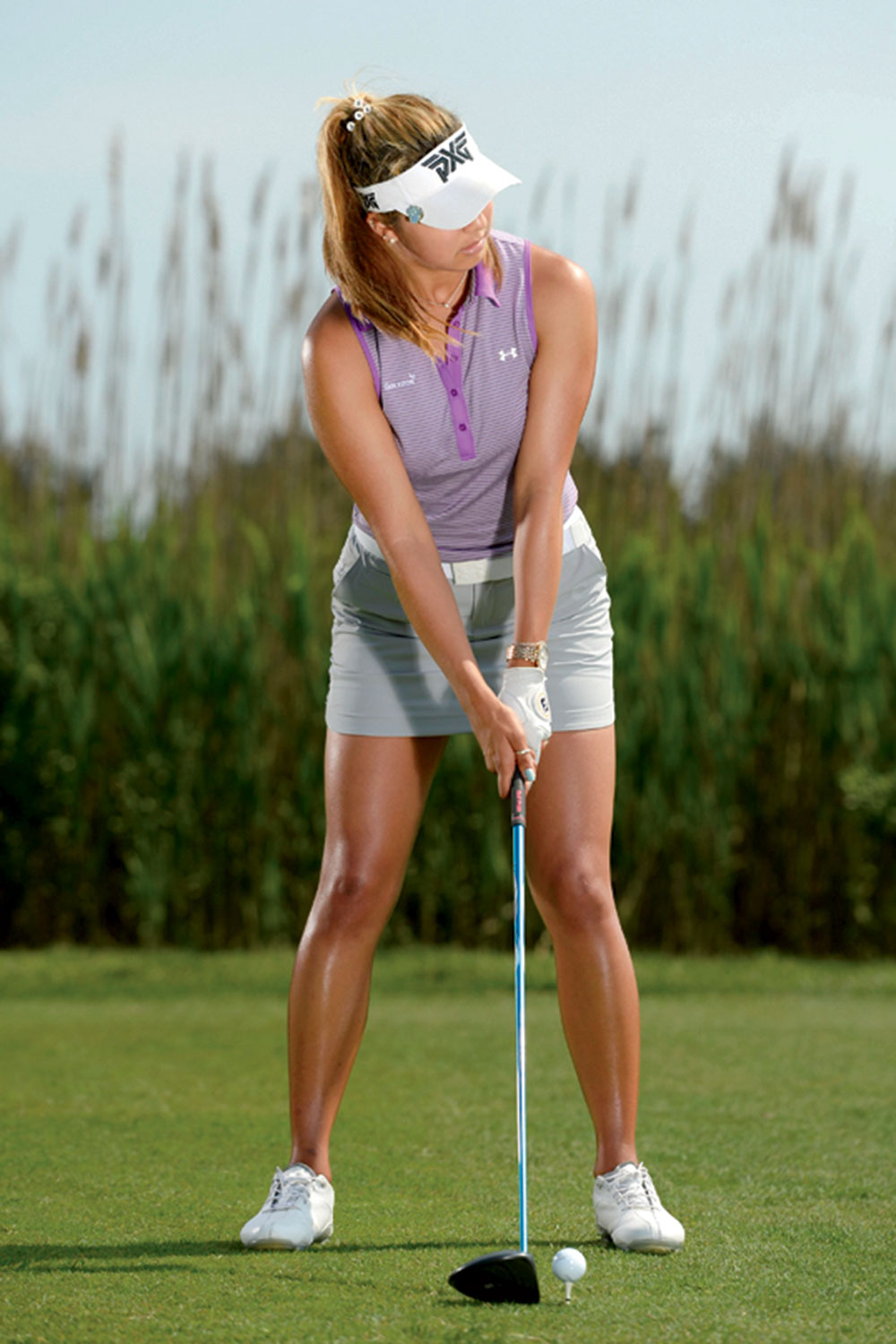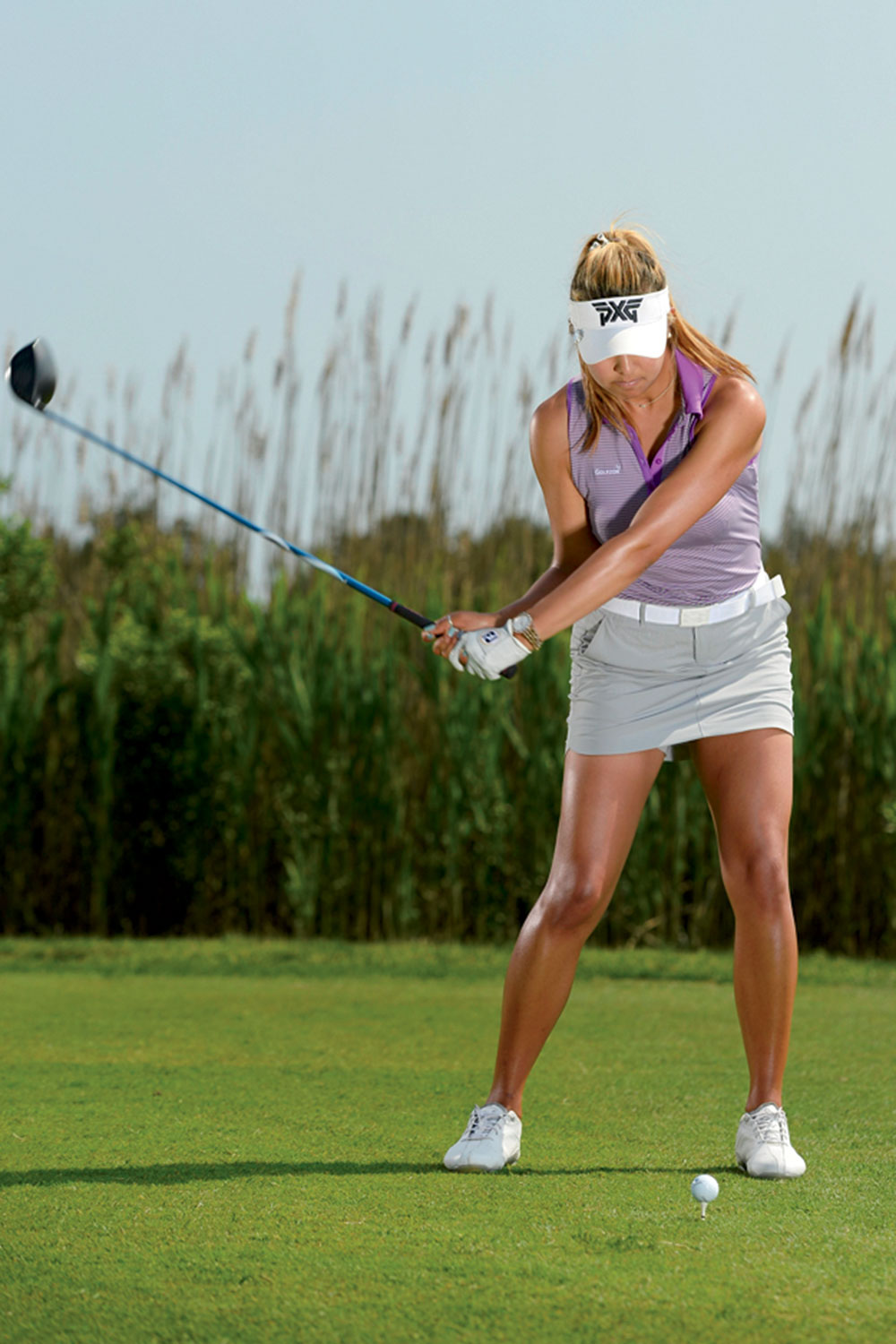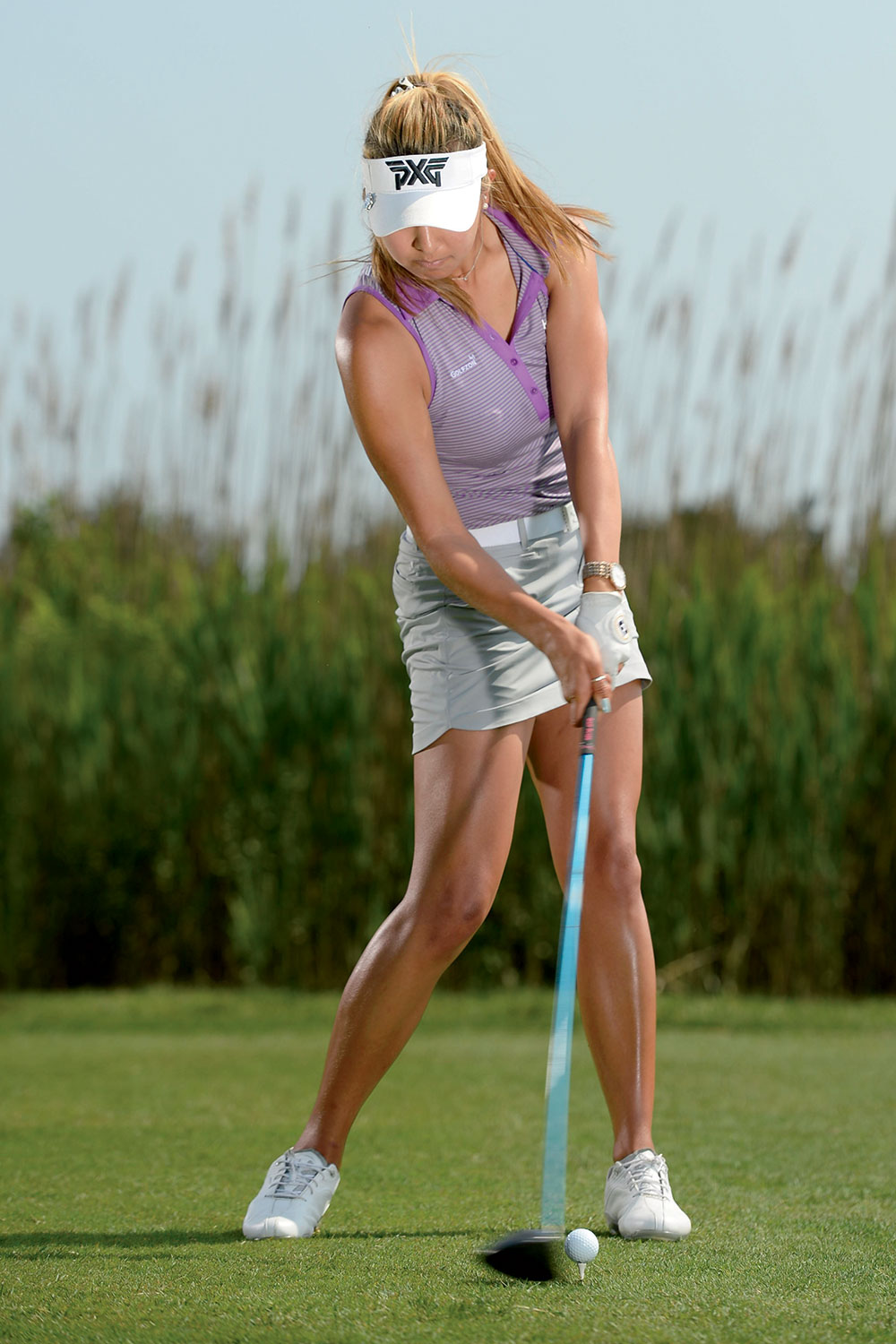THIS is my third year on the LPGA Tour, and I had five top-10 finishes in 2016. There are several parts of my game I can credit for that, but my driving is something I’m really working on. My average distance off the tee is about 260 yards (238 metres), and I hit the fairway eight out of every 10 drives. If that sounds like a good combination of distance and accuracy, then take my advice and work on your timing like I do. To be in sync, my swing can’t be too long or too fast, or I’ll struggle to square the face at impact. In fact, swing speed is the furthest thing from my mind. I’m thinking about staying smooth. Next time you practise, swing as fast as you can with your driver a few times, then dial it back to a speed that allows you to consistently hit the ball solidly. If that feels like half-speed, so be it. Don’t underestimate the value of hitting the ball squarely on the clubface if you want to be longer and straighter. Turn the page for more tips on improving your tee shots.
– with Keely Levins
 Setup
Setup
Preset your timing before you hit the shot
I walk behind the ball after I tee it up and take two practice swings. The first is a half-swing, reminding me not to let my real swing get too long. The second is full, but nice and slow. Just like you, I can get tense. When that happens, I tend to move, walk, talk and swing faster. So the second rehearsal swing, combined with a few deep breaths, helps me remain calm. After I choose my target and shot, I step in and line up the clubface first, then my feet. To make sure my hands are in the right spot at address, they should block the view of my left foot. My dad taught me that. I look at the target one more time [above] and then start my swing. All of this might sound too methodical, but a consistent pre-shot routine leads to consistent timing.
 Going Back
Going Back
shorten things up for better ball-striking
When I’m taking the club back, I don’t like excess movement – that’s how you lose your timing. I want to stay in control, and that means making a compact swing. It’s easy to get excited with the driver and swing out of your shoes. To avoid doing that, one of my favourite drills is to take the driver back no farther than where my left arm is parallel to the ground [left]. I’ll hit five shots from this position and one more with my normal-length swing. I keep alternating like this to ingrain a feeling of being compact and connected with my driver. It really improves my ball-striking.
 Coming Down
Coming Down
sync your torso with your lower body
At the top of the swing, I like to feel my weight loaded on the instep of my right foot. This means that I haven’t turned back too far with my hips. You don’t need a huge hip turn to hit solid drives. In fact, having too much can make your swing too long and loose for any consistency with your ball-striking. With my weight set, I know I’m ready to start the downswing. Whenever I get nervous, I have a tendency to turn my hips towards the target too fast compared to my upper body – the spinout move. To keep from doing that, I feel as though the end of the grip is leading the way and moving towards the ball [above]. This keeps my upper body rotation in time with my lower body. I get back to the ball unhurried, but accelerating.
 Impact
Impact
stable wrists mean better accuracy
A sign your timing is off is when your hands are doing too much to hit the ball. My hands are just an extension of my arm swing and body rotation. When they’re moving as a part of that bigger piece, I want my left wrist flat and firm and the back of that hand pointing towards the target at impact [left]. That helps put the clubface in position to hit an accurate drive. It’s similar to my left-hand position at address. That sounds simple because I keep it simple, and so should you. Shorten up, swing easy and keep everything moving together and you’ll split the fairway.




